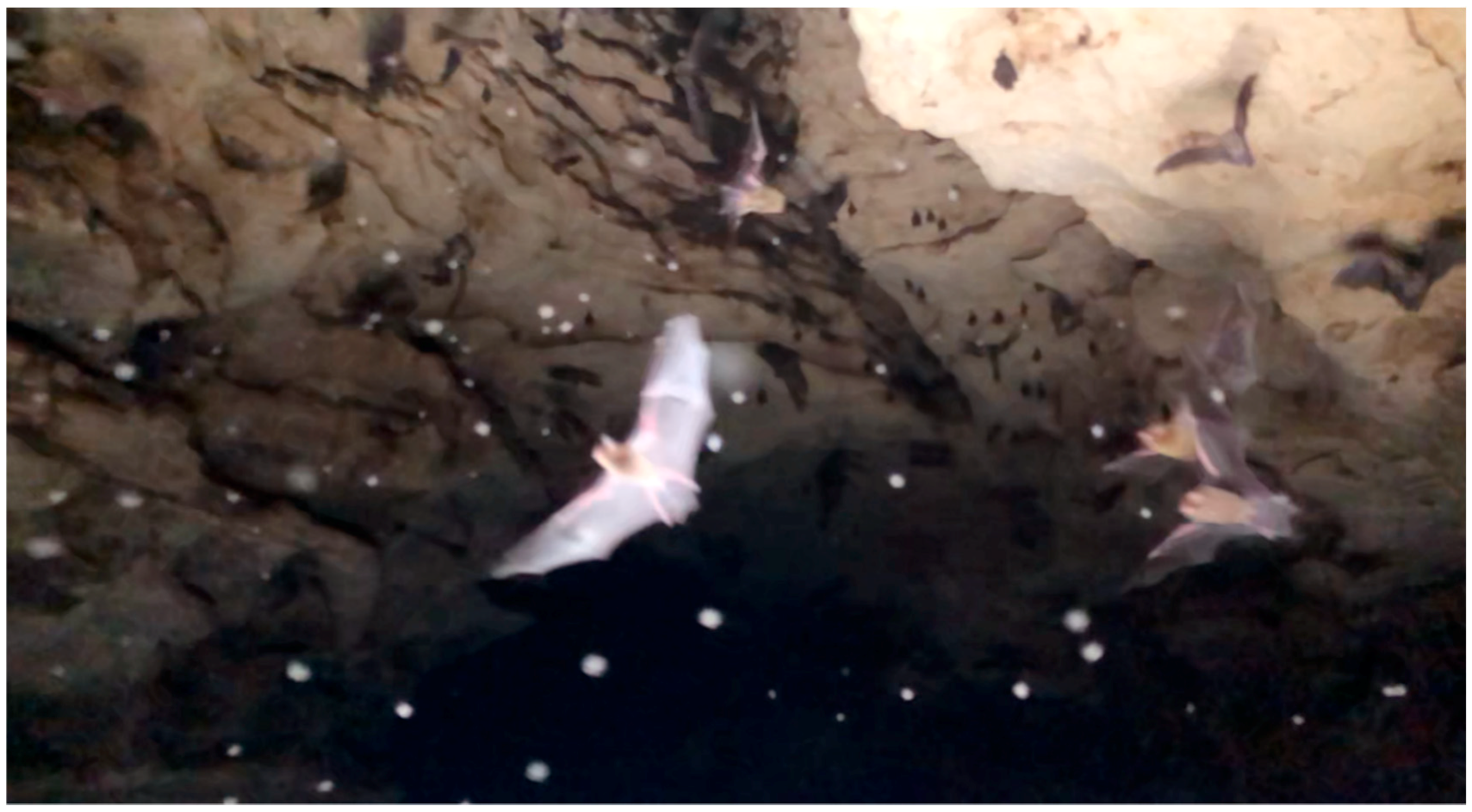Acute Pulmonary Histoplasmosis Outbreak in A Documentary Film Crew Travelling from Guatemala to Australia
Abstract
:1. Case Report
2. Discussion
Author Contributions
Funding
Conflicts of Interest
References
- Wheat, L.J.; Freifeld, A.G.; Kleiman, M.B.; Baddley, J.W.; McKinsey, D.S.; Loyd, J.E.; Kauffman, C.A. Clinical practice guidelines for the management of patients with histoplasmosis: 2007 update by the Infectious Diseases Society of America. Clin. Infect. Dis. 2007, 45, 807–825. [Google Scholar] [CrossRef] [PubMed]
- Valdez, H.; Salata, R.A. Bat-associated histoplasmosis in returning travelers: Case presentation and description of a cluster. J. Travel Med. 1999, 6, 258–260. [Google Scholar] [CrossRef] [PubMed]
- Weinberg, M.; Weeks, J.; Lance-Parker, S.; Traeger, M.; Wiersma, S.; Phan, Q.; Dennison, D.; MacDonald, P.; Lindsley, M.; Guarner, J. Severe histoplasmosis in travelers to Nicaragua. Emerg. Infect. Dis. 2003, 9, 1322. [Google Scholar] [CrossRef] [PubMed]
- Buxton, J.A.; Dawar, M.; Wheat, L.J.; Black, W.A.; Ames, N.G.; Mugford, M.; Patrick, D.M. Outbreak of histoplasmosis in a school party that visited a cave in Belize: Role of antigen testing in diagnosis. J. Travel Med. 2002, 9, 48–50. [Google Scholar] [CrossRef] [PubMed]
- Nygård, K.; Brantsaeter, A.; Feruglio, S.; Ravn, J.; Dotevall, L.; Hasle, G.; Myrvang, B. Histoplasmosis among travellers to Central America. J. Nor. Med. Assoc. 2006, 126, 2838–2842. [Google Scholar]
- Centers for Disease Control and Prevention (CDC). Outbreak of histoplasmosis among travelers returning from El Salvador—Pennsylvania and Virginia, 2008. Morb. Mortal Wkly. Rep. 2008, 57, 1349–1353. [Google Scholar]
- Kajfasz, P.; Basiak, W. Outbreak of pulmonary histoplasmosis involving a group of four Polish travellers returning from Ecuador. Int. Marit. Health 2012, 63, 59–62. [Google Scholar] [PubMed]
- Rocha-silva, F.; Figueiredo, S.M.; Silveira, T.T.; Assunção, C.B.; Campolina, S.S.; Pena-barbosa, J.P.; Rotondo, A.; Caligiorne, R.B. Histoplasmosis outbreak in Tamboril cave—Minas Gerais state, Brazil. Med. Mycol. 2014, 4, 1–4. [Google Scholar] [CrossRef] [PubMed]
- Wheat, L.J. Approach to the diagnosis of the endemic mycoses. Clin. Chest Med. 2009, 30, 379. [Google Scholar] [CrossRef] [PubMed]
- McLeod, D.S.; Mortimer, R.H.; Perry-Keene, D.A.; McBride, W.J.; Coulter, C.; Robson, J.M. Histoplasmosis in Australia: Report of 16 cases and literature review. Medicine 2011, 90, 61–68. [Google Scholar] [CrossRef] [PubMed]
- Richer, S.M.; Smedema, M.L.; Durkin, M.M.; Herman, K.M.; Hage, C.A.; Fuller, D.; Wheat, L.J. Improved diagnosis of acute pulmonary histoplasmosis by combining antigen and antibody detection. Clin. Infect. Dis. 2016, 62, 896–902. [Google Scholar] [CrossRef] [PubMed]

| Location | Year | Population/Activity | Attack Rate, % | Diagnosis | Treatment (%, Primary Indication) |
|---|---|---|---|---|---|
| Ecuador (2) | 1999 | US high school students cave exploring | 11/17 (65%) | Urine Ag 0/2 (0%) Serology: 4/7 (57%) | 3/17 (18%, prolonged symptoms) |
| Nicaragua (3) | 2001 | US “adventure travellers” cave exploring | 12/14 (85%) | Urine Ag 7/12 (58%) Serology 14/14 (100%) | 9/12 (75%, symptom severity) |
| Belize (4) | 2002 | Canadian high school students cave exploring | 14/15 (93%) | Urine Ag 5/7 (71%) Serology: 3/15 (20%) | 1/15 (7%, prolonged symptoms) |
| Guatemala, El Salvador (5) | 2004 | Norwegian tourists cave exploring | 16/19 (84%) | Serology: 8/14 (57%) | 3/16 (19%, not reported) |
| El Salvador (6) | 2008 | US missionaries renovating a church | 20/33 (61%) | Antigen (serum/urine) 7/20 (35%) | Not reported |
| Ecuador (7) | 2012 | Polish tourists (organised tour) cave exploring | 4/4 (100%) | Serology: 4/4 (100%) | 2/4 (50%, prolonged symptoms) |
| Brazil (8) | 2013 | Scientists, researching histoplasmosis in caves | 4/8 (50%) | Serology 0/4 (0%) Sputum cytology, culture 4/4 (100%) | 2/4 (50%, prolonged symptoms) |
© 2019 by the authors. Licensee MDPI, Basel, Switzerland. This article is an open access article distributed under the terms and conditions of the Creative Commons Attribution (CC BY) license (http://creativecommons.org/licenses/by/4.0/).
Share and Cite
Muhi, S.; Crowe, A.; Daffy, J. Acute Pulmonary Histoplasmosis Outbreak in A Documentary Film Crew Travelling from Guatemala to Australia. Trop. Med. Infect. Dis. 2019, 4, 25. https://doi.org/10.3390/tropicalmed4010025
Muhi S, Crowe A, Daffy J. Acute Pulmonary Histoplasmosis Outbreak in A Documentary Film Crew Travelling from Guatemala to Australia. Tropical Medicine and Infectious Disease. 2019; 4(1):25. https://doi.org/10.3390/tropicalmed4010025
Chicago/Turabian StyleMuhi, Stephen, Amy Crowe, and John Daffy. 2019. "Acute Pulmonary Histoplasmosis Outbreak in A Documentary Film Crew Travelling from Guatemala to Australia" Tropical Medicine and Infectious Disease 4, no. 1: 25. https://doi.org/10.3390/tropicalmed4010025
APA StyleMuhi, S., Crowe, A., & Daffy, J. (2019). Acute Pulmonary Histoplasmosis Outbreak in A Documentary Film Crew Travelling from Guatemala to Australia. Tropical Medicine and Infectious Disease, 4(1), 25. https://doi.org/10.3390/tropicalmed4010025




